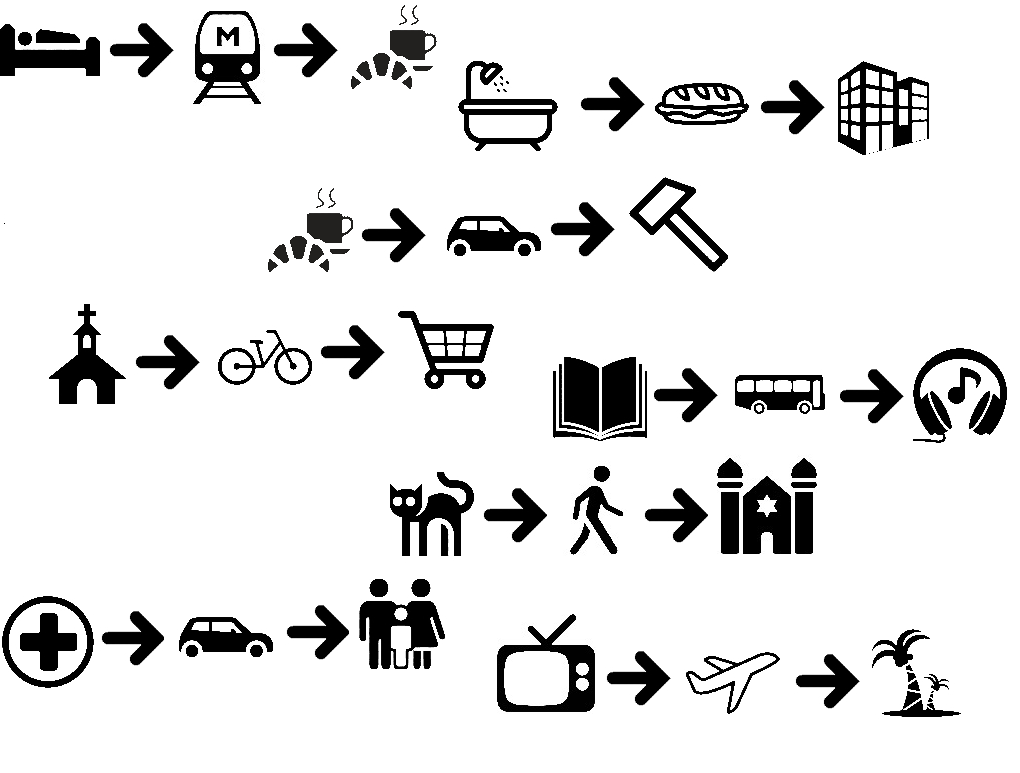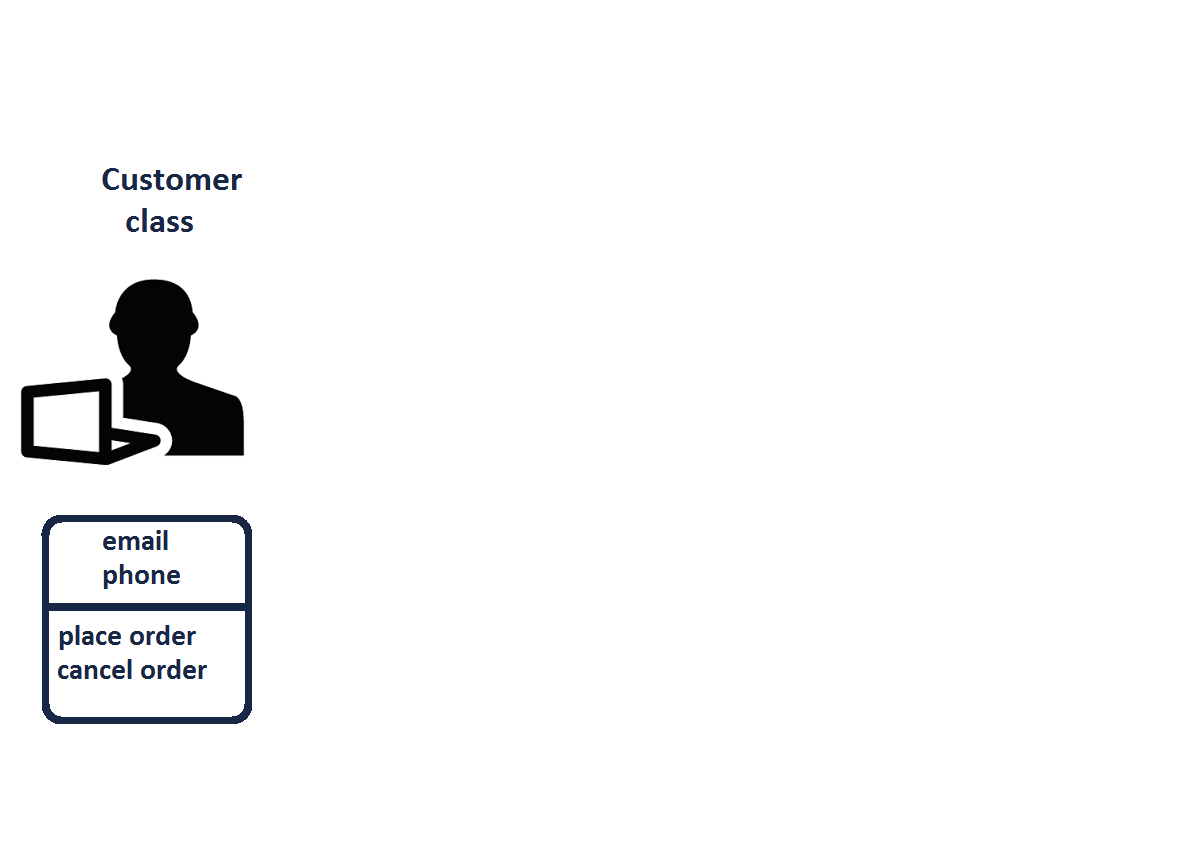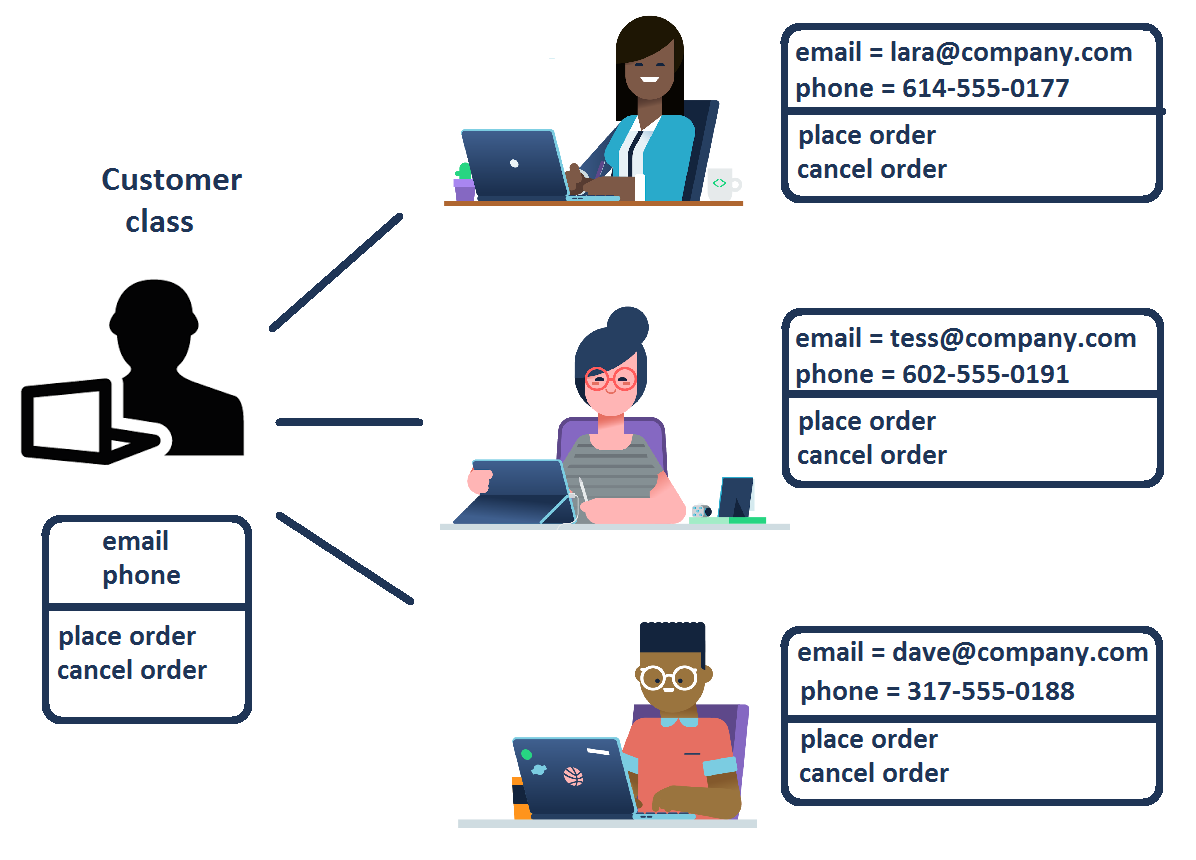What is OOP?
Introduction to Object-Oriented Programming in Python

George Boorman
Curriculum Manager, DataCamp
Procedural programming
- Code as a sequence of steps
- Great for data analysis

1 Image source: https://unsplash.com/@tateisimikito
Thinking in sequences


Procedural programming
- Code as a sequence of steps
- Great for data analysis
Object-oriented programming
- Code as interactions of objects
- Great for building software
- Maintainable and reusable code!
Objects
$$\Large{\text{Object = data + functionality}}$$

State - an object's data
Behavior - an object's functionality
Objects in Python
- Everything in Python is an object
| Object | Type |
|---|---|
5 |
int |
"Hello" |
str |
pd.DataFrame() |
DataFrame |
sum() |
function |
| ... | ... |
Classes as blueprints
- Class: a blueprint for objects outlining possible states and behaviors

Classes as blueprints
- Class : a blueprint for objects outlining possible states and behaviors

Classes in Python
- Python objects of the same type behave in the same way
listsare a class- Created with comma-separated values
[1, 2, 3, 4, 5] - Share the same methods, e.g.,
.append()
- Created with comma-separated values
- Use
type()to find the class
type([1, 2, 3, 4, 5])
<class 'list'>
Attributes and methods
State ↔ attributes
import pandas as pd df = pd.DataFrame({"a": [1,2,3], "b": [4,5,6]})# shape attribute df.shape
(3, 2)
- Use
obj.to access attributes and methods
Behavior ↔ methods
import pandas as pd df = pd.DataFrame({"a": [1,2,3], "b": [4,5,6]})# head method df.head()
a b
0 1 4
1 2 5
2 3 6
Displaying attributes and methods
# Display attributes and methods
dir([1, 2, 3, 4])
['__add__',
'__class__',
'__contains__',
'__delattr__',
...
'pop',
'remove',
'reverse',
'sort']
# Display attributes and methods
dir(list)
['__add__',
'__class__',
'__contains__',
'__delattr__',
...
'pop',
'remove',
'reverse',
'sort']
Cheat sheet
| Term | Definition |
|---|---|
| Class | A blueprint/template used to build objects |
| Object | A combination of data and functionality; An instance of a class |
| State | Data associated with an object, assigned through attributes |
| Behavior | An object's functionality, defined through methods |
Let's review!
Introduction to Object-Oriented Programming in Python

